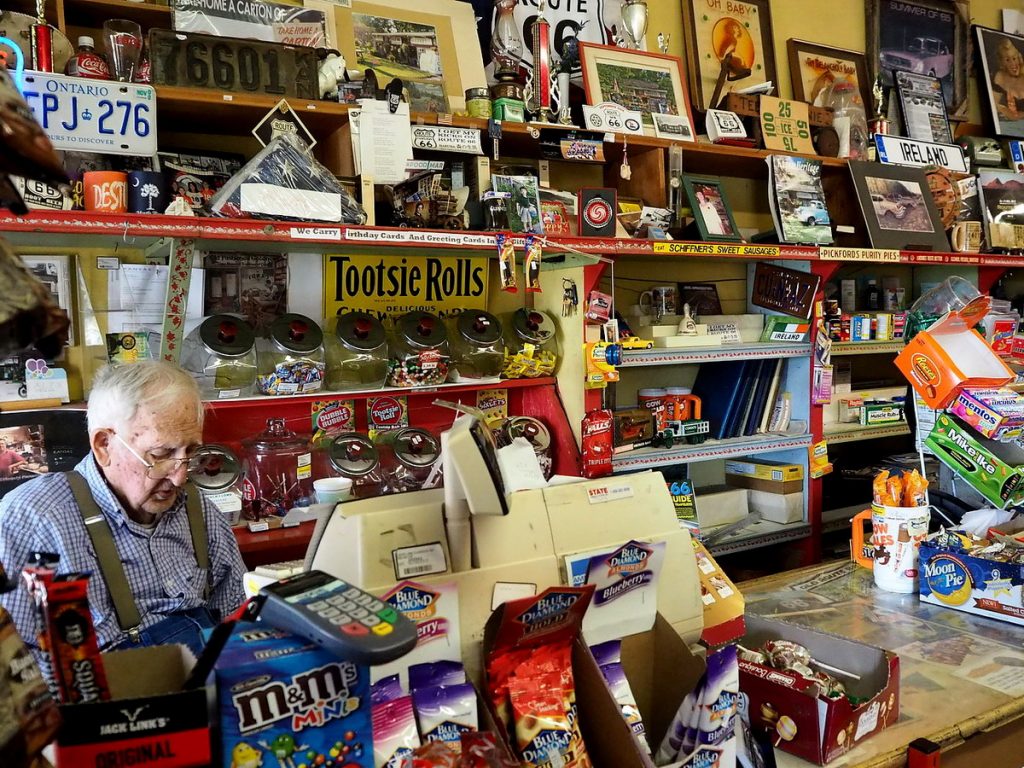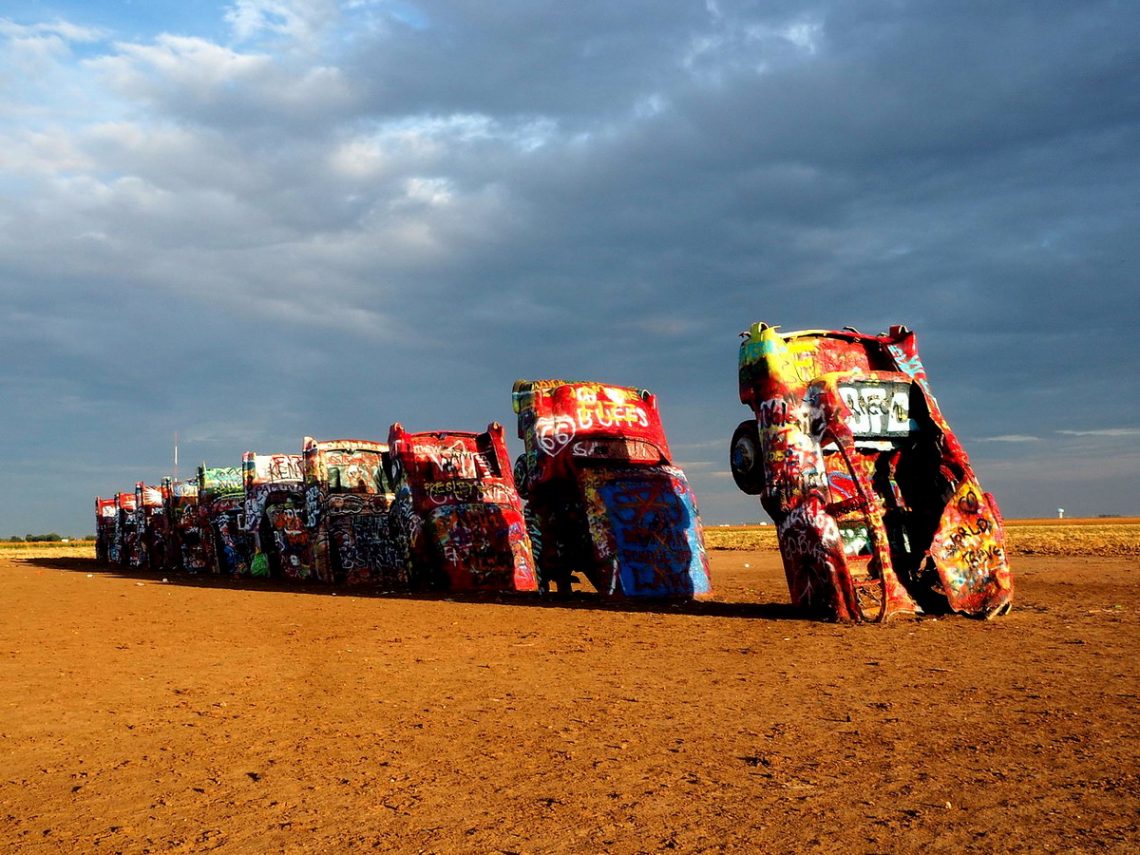“But what is there to see?” a lot of people asked me when I came up with the plan to drive along Route 66, cutting across the US. Whilst it’s true that there are no sensational attractions along the way, the atmosphere of the Route definitely gets under your skin. And it does so deeply, that as you approach Santa Monica, your heart will sink that this amazing adventure will soon be over.
The sights of the legendary Route 66 are not significant or famous on their own, but the shabby or newly flourishing motels, gas stations, drive-in cinemas and other attractions as a whole have a certain atmosphere. Those who have never been here probably won’t understand what can be seen from two dozen rusty neon signs, but a traveller learns fast that it is well worth visiting all of them, because we never know what stories can be found behind them.
My main advice for those who are planning such a journey is simple: take your time! While the 4500 kilometres can easily be driven in a week, you will miss the best part of the trip: the exciting chats and stories.
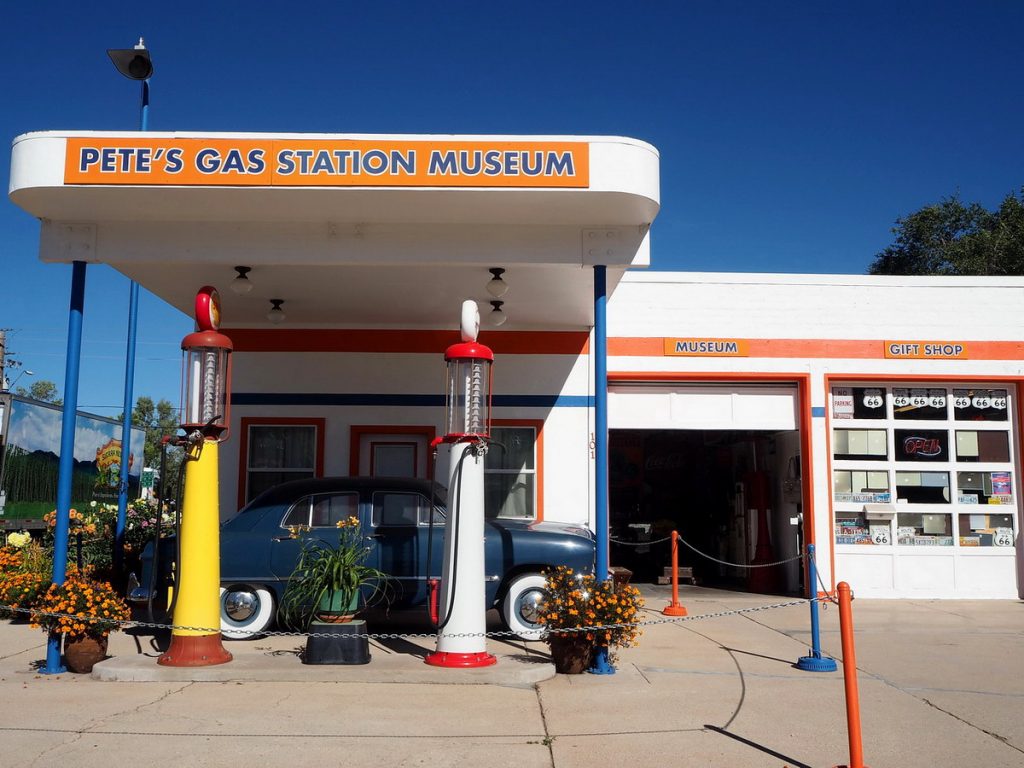
Filming locations of cult movies
I always like to visit the location of my favourite films. I did not have to drive too long on Route 66 to reach the first significant spot.
The opening scene of Blues Brothers takes place in Joliet town, where Jake Blues is released from jail. The institution was closed in 2002 and although it plans to reopen as a museum for pilgrims of Route 66, I found it closed. For the time being, the wax statues of the two main protagonists are exhibited in the local museum to commemorate the cult movie that was shot in 1980.
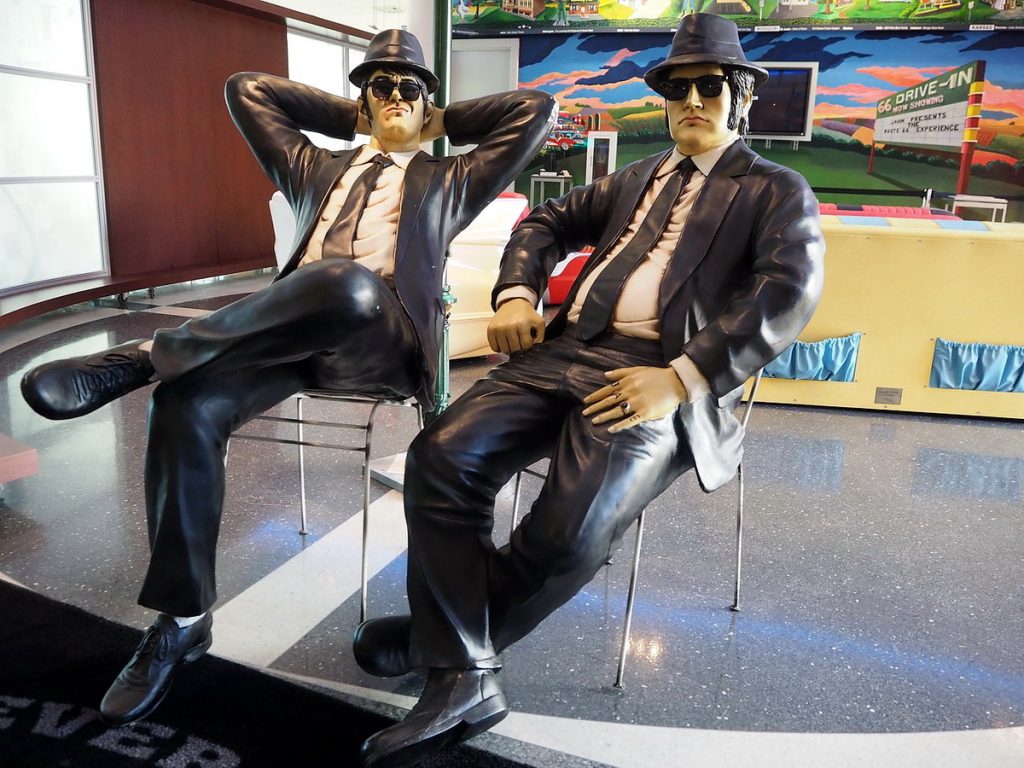
But the most famous filming location is not in Joliet, but in Galena. The old gas station was known as Four Women on the Route, today it is called Cars on the Route. The population of the formerly flourishing mining town decreased to one tenth of its original number when the lead and zinc mines were depleted and, after the highway was built, traffic on the Route which crossed the town dwindled remarkably.
The motels, restaurants and gas stations have closed down and the empty town looked as lethargic as Radiator Springs, the fictional location of Cars. When the producers of Cars were here during their location-scouting, they saw a rusty truck on the weedy area behind the gas station, which became the inspiration for the character of Tow Mater.

Since the debut of the film in 2006 the town is full of life again. Hundreds of tourists stop here every day to take a photo with the beloved cars. The former gas station operates today as a café and gift shop, home to all kinds of knick-knacks and an excellent selfie-spot. Four women discovered the business opportunity, which is why the café was originally called Four Women on the Route. The kindness and hospitality of these four women became legendary.

In Bellemont, the weather-beaten, little gas station which featured in Easy Rider and the motel behind it, are not at all busy. The motel appeared as the Old Pine Breeze Inn in the film, the owner of which did not welcome the two motorcyclists and meaningfully put out the “No Vacancies” sign. Billy and Wyatt drove on, but shouted back “you asshole!”. For nostalgia, the motorcyclists visiting this place do the same from time to time.
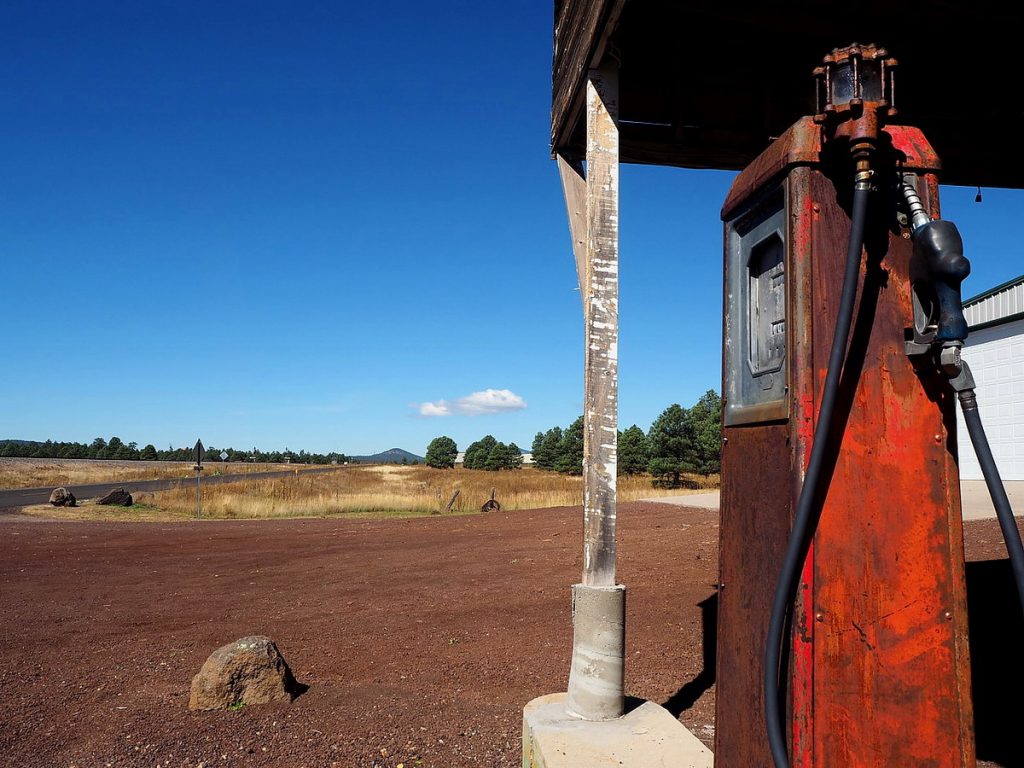
The next stop is Newberry Spring, the legendary location of the Bagdad Cafe. When the film was shot, its name was Sidewinder. The title of the film and the name of the cafe in the film were inspired by a cafe in the nearby Bagdad town, but that no longer exists and no traces remain.
After the success of the film, the Sidewinder – where the film was actually shot, was renamed to Bagdad Cafe.
Bagdad Cafe is a good example of why it is worth travelling slowly. If I just drove by in front of the cafe, or just stopped for a quick photo, I would never know its story. But I popped in for a chili and a cake and I had a talk with its owner. Andrea Pruett bought the little restaurant 20 years ago, and she remembers with pleasure the shooting of the film which put her cafe on the tourist map.
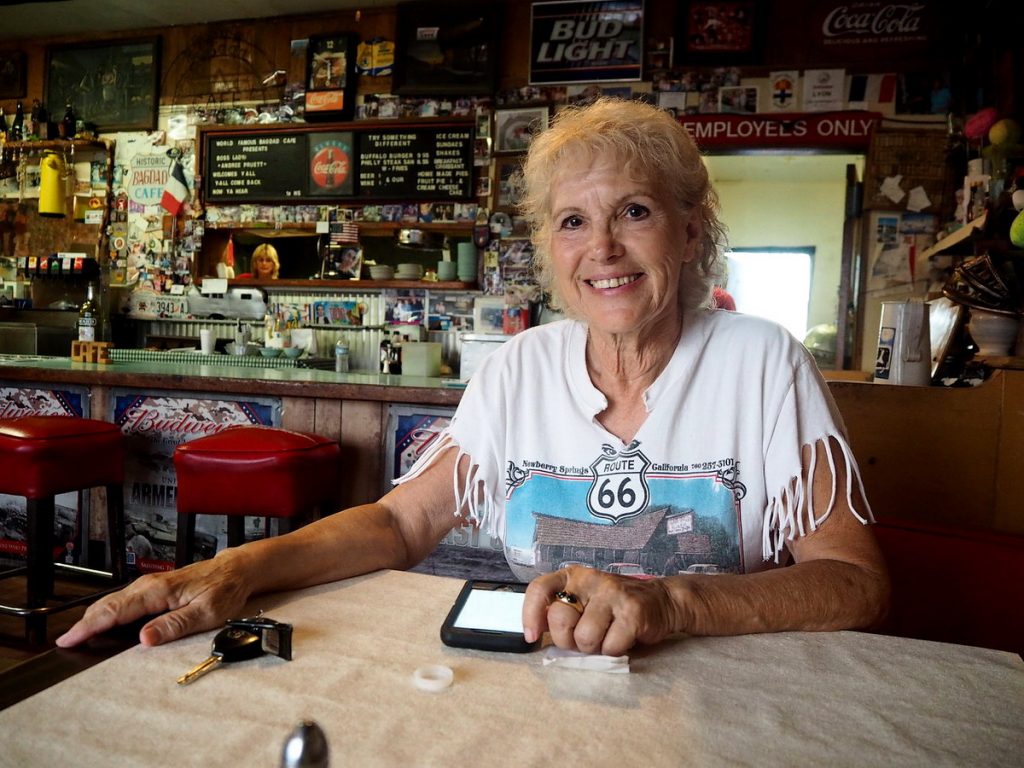
It is interesting that three quarters of the visitors are French, as the film won a significant French film award. Of the remaining 25%, only 5% are American, the others are foreign, mostly European pilgrims, like me.
It is hard to maintain the café despite the fame brought by the film. A few years ago, Andrea had to sell her land in order to continue operating. It was obvious from our chat that she adores the place and she would do anything to keep it open.
This is a typical attitude of all who do business on the route. There are not enough visitors to make a big profit, so I met real fanatics everywhere, whose passion is to keep alive an iconic location.
Clark Gable spent his wedding night here
Maybe the most famous and most characteristic attractions of Route 66 are the neon signs of the old motels. Some of them stand along the road covered with rust, others are renovated and restored to their former beauty.
I heard one of the best stories in Carthage, at the Boots Court Motel. The motel is located at the intersection of Routes 66 and 71, once the main travel intersection of east-west and north-south.
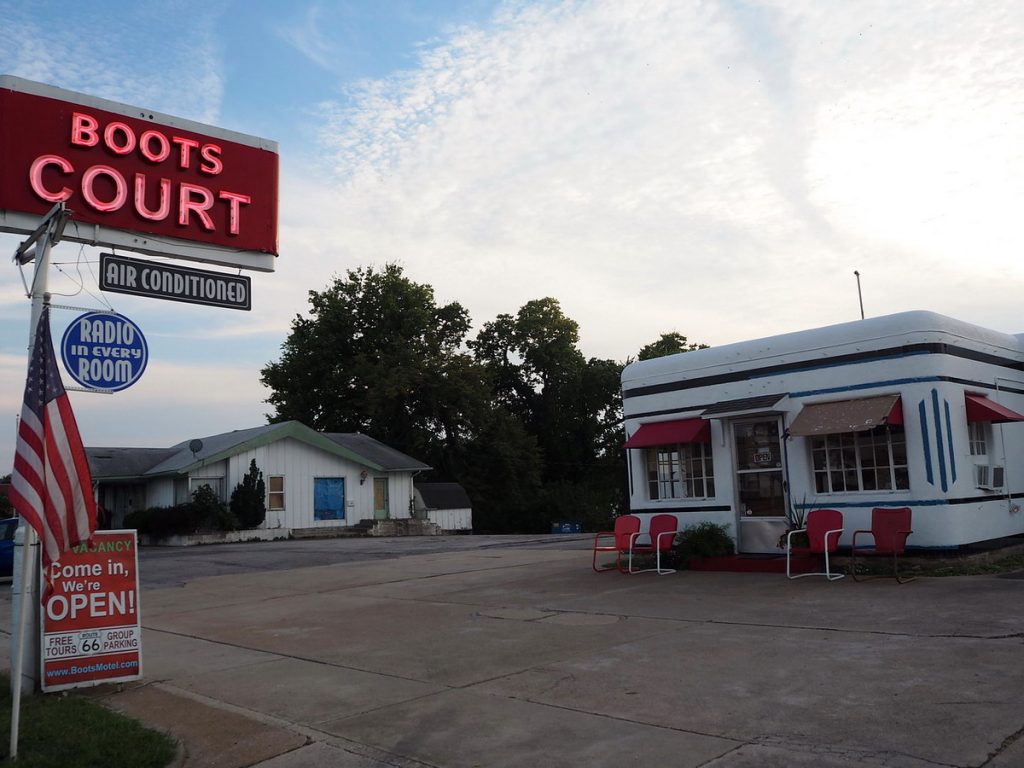
The motel is a memento of old times and its operation has been at risk on several occasions.
It was once bought by a guy who did not want to run a motel, but who had heard that the Walgreens drugstore wanted to buy the area for good money and so hoped to sell them the plot at high profit. The local population found out about the plan and put the company under pressure. Finally the drugstore chain gave up the idea of construction, because they did not want to upset their future clients.
After this plan failed, shady businesses rented the place, then it was for sale again. The new owner wasn’t any better, he did not take into consideration the spirit of the space during the renovation and he disfigured the building by adding a terrible roof.
After all these difficulties, the motel has been in good hands for the last few years. Two sisters bought it and they really want to restore the hotel to its original state and glory.
According to legend, even Clark Gable spent a night here. The old, limping caretaker who works here voluntarily, enthusiastically showed me Room 6, the apartment of the movie star.

The best thing is that anyone can check in here, and the charming motel is not prohibitively expensive. Rooms are available for $66 for one person or $71 for two (including taxes), in honour of the one-time important intersection.
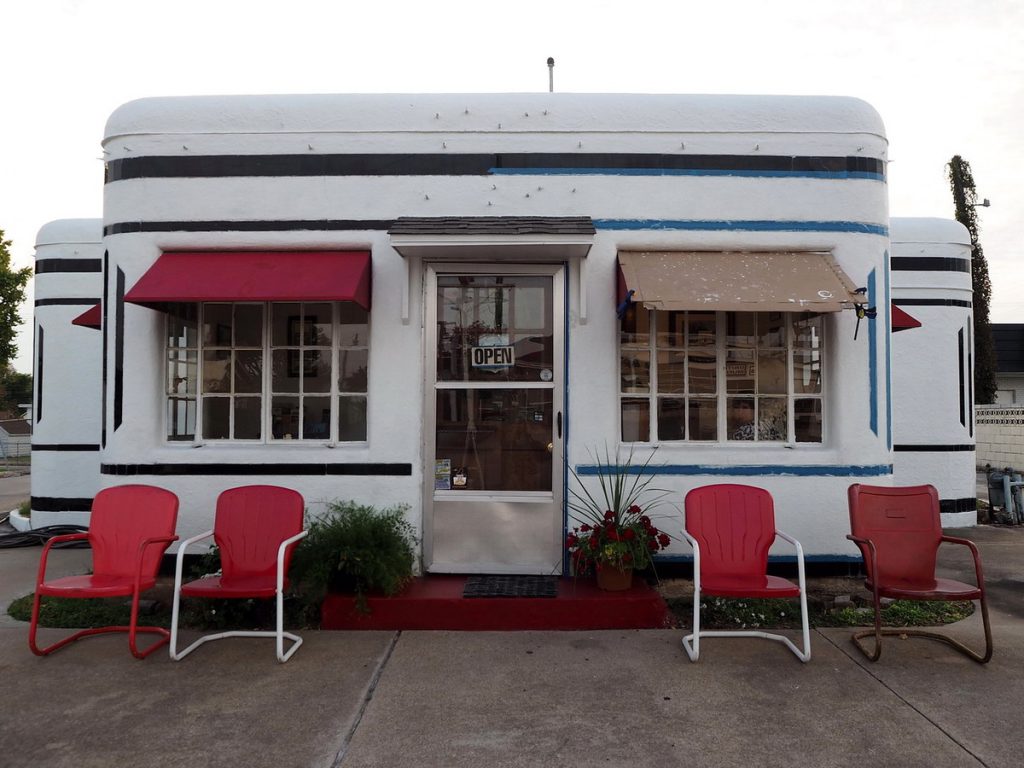
I met the memory of Clark Gable later again in Oatman. A capriciously winding, serpentine stretch of road leads to here – so steep that when the cars weren’t high-powered, they drove the 3500 foot slope in reverse gear. Every source mentions that local people can perfectly shunt.
Similar to Galena, Oatman is also a typical example of how a forgotten, empty town can rise from the dead because of the wave of nostalgia created by the Route. In the 1930s, there was a considerable mining industry here which continued until World War II. Then the industry terminated and the townsmen tried their fortune elsewhere.
Today the depopulated town flourishes again due to tourists, but for me it was too kitschy. Every house is a gift shop or a restaurant, and costumed cowboys play bank robbery scenes.
Donkeys are roaming in the roads of the town, with stickers on their forehead telling the tourists not to feed them.

The main attraction of the little town is the Oatman Hotel. Clark Gable and Carole Lombard spent their honeymoon here in 1939. Their one-time room – Apartment 15 – cannot be used now, but everyone can peer into it, because the door is a glass wall.
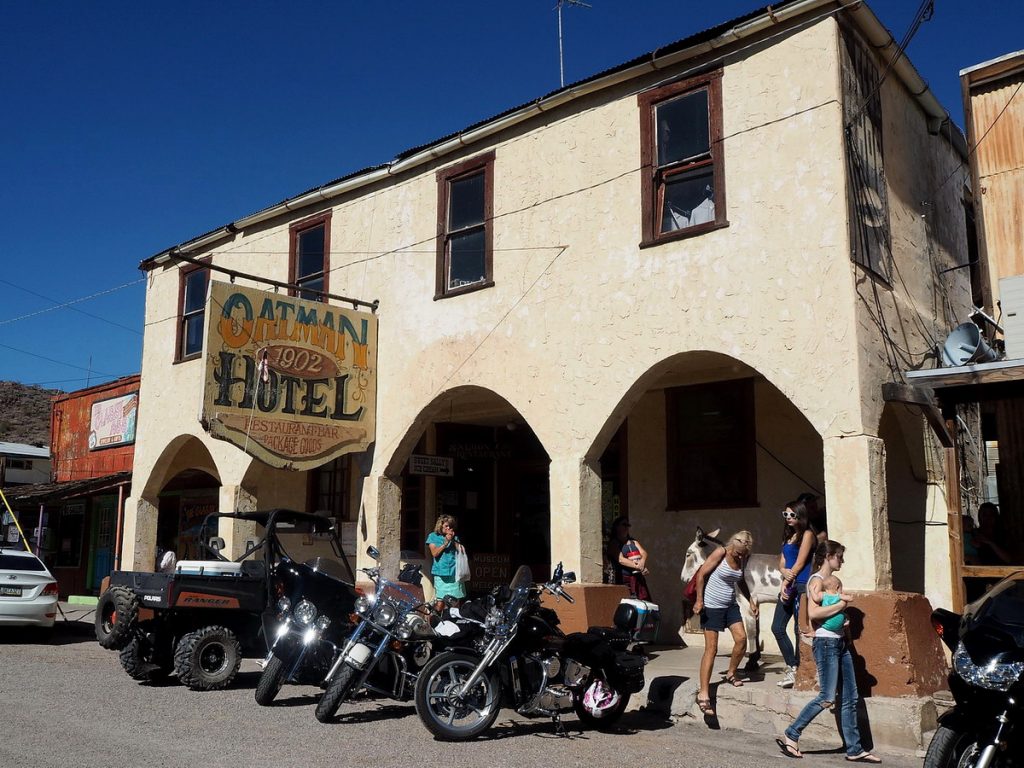
Roadside attractions for wanderers of Route 66
Unfortunately there are some motels that did not survive the modernisation. I found a piece of the Coral Court Motel, one of the most famous demolished motels in the edge of St. Louis, in a building of the Museum of Transportation.
This hotel, which was built in 1941, was the most modern and most popular accommodation in the heyday of the route.
It offered services that were considered rare at that time, like proper bathrooms in every room, a swimming pool in the shady park and a porter to carry the guests’ luggage. Every room had a private, closed garage, thus the hotel was an excellent place for those who wanted to keep their stay secret.
If someone wanted a casual rendezvous or an exclusive business meeting, he would not be caught here just because his car was parked outside (“Look, what is Bob’s car doing here?). No matter how many fans of the motel protested against the demolition, the building fell victim to the building of the highway in 1993, and only one room was saved for the museum.

In those days, many attractions entertained the wanderers of Route 66, e.g. a zoo, a totem pole exhibition, a park for family programs, but most of these closed a long time ago. On the other hand, there are some new attractions created since the new wave of nostalgia and they are already legendary.
The most interesting is the Cadillac Ranch installation near Amarillo, where I arrived after sunset. I was doubly lucky: there were wonderful lights and only a few visitors so I could take many excellent photos. There is a bunch of other odd installations near Amarillo created by Stanley March 3, an eccentric artist and businessman, whose ideas were implemented by the Dynamite Museum.

A few hours after the end of the world
During my journey I visited many ghost towns, which was a great experience. However, I don’t mean the over-promoted “ghost-town” of Calico, where I counted 23 tourist buses. In this mining settlement founded in 1881, every building today is a café or a gift shop.
The most exciting experiences were the real abandoned towns, where the atmosphere is sometimes truly ghostly.
Nobody is there, and in total silence one can only hear the wind and dogs barking far away. Glen Rio was like this, a town founded in 1903. Its name is also a mystery: there are no glens (valleys), and no rios (rivers) here in the desert. But there is a ruined hotel, which bears the name of the last motel of Texas on the one side, and the first motel of Texas on the other side. Most of the letters have fallen down, but the sign is still legible.
It was also interesting roaming around the ruined buildings of Two Guns. In its heyday, this place was a tourist trap with some caged animals, restaurants and a little swimming pool, but nowadays it is only ruins covered with graffiti.

I tasted all America
I could write a separate article about the gastronomy of Route 66, because during the journey I could practically taste all of America. I adored most of the restaurants and cafés, which are real relics from the past, e.g. the Polka Dot Drive Inn in Braidwood-Godleyn, the Palms Grill Cafe in Atlanta or, near the end of the journey, the Summit Inn in California.

Furthermore I found some beautiful old movie theatres, windswept out-of-service drive-in cinemas, plus some quirky little museums about the history of the route and so on. As I mentioned at the beginning of my article, these are not special experiences on their own, but as someone falls in love with the Route, they contribute to the incomparable atmosphere of Route 66.
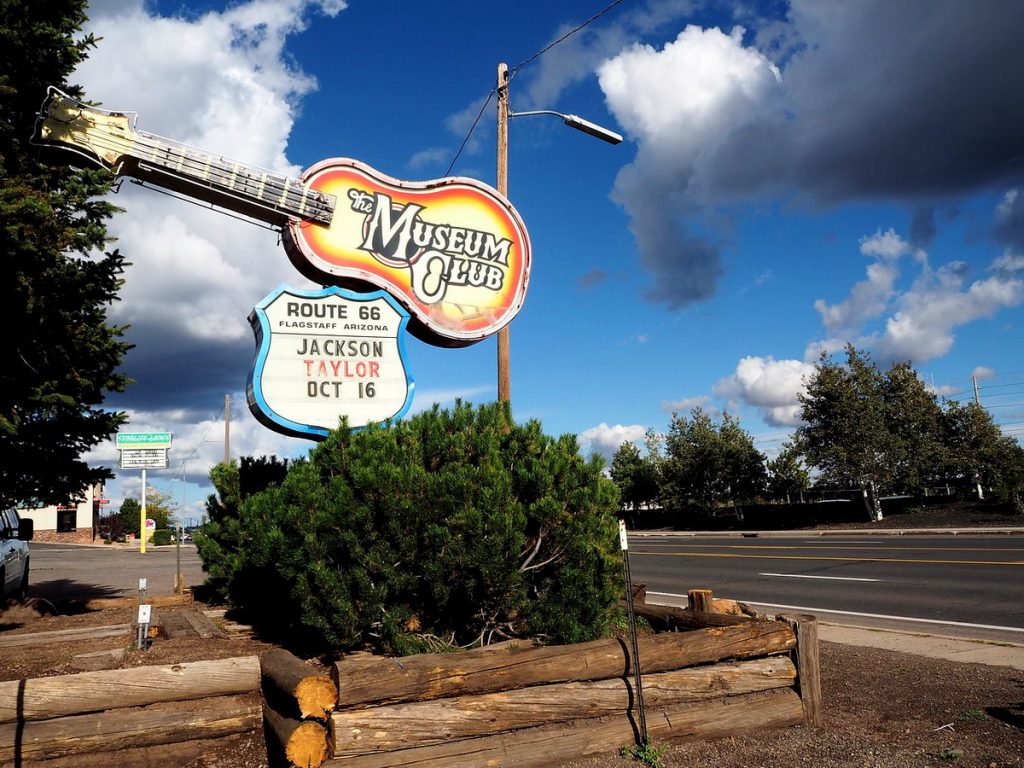

And I haven’t mentioned the fantastic feeling of freedom that penetrates you while driving. You do not meet anyone for miles; at most you race with the trains rattling by, while listening to the dominant country music on the radio … a true road trip experience like nothing else in the world.
